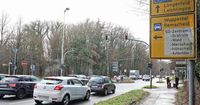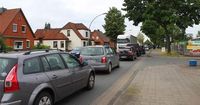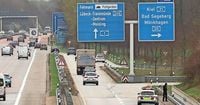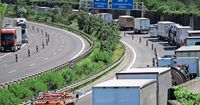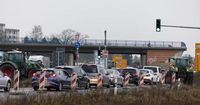As of April 11, 2025, traffic conditions across various regions in Germany are proving to be challenging due to construction projects and accidents. A comprehensive overview of the current traffic situation has been compiled from multiple sources, highlighting major routes experiencing significant delays.
In Celle, traffic is notably slow on Bundesstraße 3 (B3) towards Hannover and Soltau, as well as on Bundesstraße 214 (B214) towards Braunschweig and Schwarmstedt. Additionally, drivers should be cautious on Bundesstraße 191 (B191) towards Uelzen and Wilhelm-Heinichen-Ring in Celle, where construction work is ongoing. The data for these reports is sourced from TomTom, which utilizes GPS coordinates from millions of devices and automatic data from around 80 million mobile devices, ensuring accuracy in traffic updates.
Meanwhile, in Nienburg, the situation mirrors that of Celle, with significant congestion reported on major routes including the A2, A37, A7, A27, and A1. The Bundesstraßen affected include B6, B215, B214, B482, B62, B239, B51, B442, and B441. As with the Celle report, the data is provided by TomTom, which updates information every five minutes to keep commuters informed of new developments.
Lübeck is also facing traffic challenges, particularly on the Autobahnen A1, A20, and A226, as well as Bundesstraßen B75, B207, and B104. The ADAC has noted that the A1 and A7 are prone to frequent traffic jams, especially during tourist seasons. The A1 connects Hamburg with coastal towns, making it a vital route during peak travel times.
In Teltow-Fläming, traffic disruptions are reported on Autobahnen A10, A12, A13, and A113, alongside Bundesstraßen B101, B96, B102, B115, B179, and B246. The region's traffic reports are also sourced from TomTom, which aims to provide real-time updates to drivers navigating through busy areas.
Remscheid is experiencing significant traffic congestion, particularly on the A1 and A46. The ADAC has classified these routes as some of the most congested in North Rhine-Westphalia (NRW), with the A1 alone accounting for nearly 6,500 hours of traffic jams between Cologne and Dortmund in 2023. The A46, linking Düsseldorf and Wuppertal, is also heavily trafficked, especially as it serves as a key connection for many commuters. Important local roads, including B51, B51n, B229, B237, and several Landesstraßen, are also highlighted as critical routes for regional traffic.
In Solingen, the A1, A3, and A46 are among the top ten most congested routes in NRW, with the A3 being particularly notorious for traffic delays. Commuters have reported over 10,000 hours spent in traffic jams on the A3 between Cologne and Oberhausen in 2023. The B229 and B224 serve as vital connectors within the city, facilitating access to the A3 and other major highways.
Lastly, in Gifhorn, the traffic situation is similarly strained with delays reported on the A2 and A39, as well as Bundesstraßen B188, B4, B214, B248, and K114. The data, once again provided by TomTom, aims to keep drivers updated on the latest traffic conditions.
As traffic congestion continues to be a significant issue across these regions, authorities urge drivers to remain vigilant and considerate of other road users. The reliance on real-time data from services like TomTom is crucial for navigating the complexities of construction and traffic disruptions.
In summary, the ongoing construction projects and high traffic volumes across various Autobahnen and Bundesstraßen in Germany are leading to substantial delays. Commuters are advised to plan their routes accordingly and stay informed through reliable traffic updates.
